43 lipids on food labels
Food labels - NHS This type of label includes information on energy (kJ/kcal), fat, saturates (saturated fat), carbohydrate, sugars, protein and salt. It may also provide additional information on certain nutrients, such as fibre. All nutrition information is provided per 100 grams and sometimes per portion. 6 Foods High in Lipids and Why You Should Avoid - WebMD These 6 foods are particularly high in saturated fats and should be avoided. 1. Beef Fat Beef fat, also known as beef tallow, is almost entirely made of saturated fats. Almost half of the lipids...
Food Labeling & Nutrition | FDA Food labeling is required for most prepared foods, such as breads, cereals, canned and frozen foods, snacks, desserts, drinks, etc. Nutrition labeling for raw produce (fruits and vegetables) and ...

Lipids on food labels
Food Labels: Fat & Cholesterol | Home & Garden Information Center total fat—20 to 35% of calories, depending on age and gender (65 grams for the 2,000-calorie intake level used in the Daily Value)* saturated fat—less than 10% of calories** trans fat— keep as low as possible cholesterol—there is no longer a specific recommended limit for dietary cholesterol, but should be consumed as little as possible Changes to the Nutrition Facts Label | FDA - U.S. Food and ... Mar 07, 2022 · Manufacturers with $10 million or more in annual sales were required to update their labels by January 1, 2020; manufacturers with less than $10 million in annual food sales were required to ... 5.8: Lipids and the Food Industry - Medicine LibreTexts Labeling laws allow foods containing trans fat to be labeled "trans-fat free" if there are fewer than 0.5 grams per serving. This makes it possible to eat too much trans fat when you think you're not eating any at all because it is labeled trans-fat free. Always review the label for trans fat per serving.
Lipids on food labels. Foods with Lipids | List & Benefits - Video & Lesson Transcript - Study.com Lipids are found in many foods. Some examples include bacon, butter, cheese, heavy cream, eggs, nuts, seeds, fish, red meat, and poultry. What is an example of a lipid in food? A dietary lipid... List of Foods That Are High in Lipids | Healthfully Meats, Poultry and Fish. Pork, beef, poultry and poultry skins contain large amounts of lipids. The Cleveland Clinic suggests trimming visible fat from meats or purchasing leaner cuts. (See Reference 2) Some fish, such as salmon, mackerel and trout, are high in fats. Fish and fish oils provide omega-3 fatty acids thought to be necessary for ... Understanding Food Labels - Nutrition: Science and Everyday Application ... The value printed on the Nutrition Facts panel is the percent DV, which tells you how much one serving of the food contributes towards meeting the daily requirement for that nutrient. The FDA uses the following definitions for interpreting the %DV on food labels:4. 5%DV or less means the food is low in a nutrient. Nutritional advantages of oats and opportunities for its ... Jun 25, 2013 · Thus oats for food purpose are heat treated in order to deactivate the enzymes responsible for changes in oat lipids (Deane and Commers 1986). Generally, during the heat treatment, the moisture is increased to approximately and the grains are kept at temperature above 100 °C for 90–120 min (Ganssmann and Vorwerck 1995 ).
Omega-3 Fatty Acids - Health Professional Fact Sheet Several food sources of ALA, DHA, and/or EPA are listed in Table 2. The U.S. Food and Drug Administration (FDA) has established a Daily Value (DV) of 65 g for total fat but not for omega-3s. Thus, Table 2 presents the amounts of omega-3 fatty acids in grams per serving only and not the percent of the DV. Amounts of which types of lipids must be listed on food labels? Answer ... Trans fat and cholesterol are two types of lipids that should be mentioned the amount used in food on the label of the food package as these are the lipids that can result in cardiovascular disease and obesity in people. Hydrogenated oil is the artificial source of the trans fat that should avoid using of use in every minute amount. Chapter 2 Flashcards | Quizlet Study with Quizlet and memorize flashcards containing terms like So far, the DRI Committee has published recommendations for the vitamins and minerals, along with those for carbohydrates, fiber, lipids, proteins, water, and energy. a. True b. False, On average, one should try to get 100% of the DRI for every nutrient to ensure an adequate intake over time. a. True b. False, Nutrient contents ... What types of lipids must be listed on food labels? - Answers The three main food types are Proteins, Carbohydrates, and Lipids (fats). What foods have lipids? grapes and grains and Other types of food. What foods lipids? grapes and grains and Other...
Lipids and the Food Industry - Human Nutrition - University of Hawaiʻi Labeling laws allow foods containing trans fat to be labeled "trans-fat free" if there are fewer than 0.5 grams per serving. This makes it possible to eat too much trans fat when you think you're not eating any at all because it is labeled trans-fat free. Always review the label for trans fat per serving. Vitamin E - Wikipedia The U.S. Food and Drug Administration initiated a process of reviewing and approving food and dietary supplement health claims in 1993. Reviews of petitions results in proposed claims being rejected or approved. If approved, specific wording is allowed on package labels. In 1999, a second process for claims review was created. Lipids – Nutrition Essentials - Maricopa Food Sources of Lipids. Dietary lipids are primarily oils (liquid) and fats (solid). Commonly consumed oils are canola, corn, olive, peanut, safflower, soy, and sunflower oil. Foods rich in oils include salad dressing, olives, avocados, peanut butter, nuts, seeds, and some fish. Fats are found in animal meat, dairy products, and cocoa butter. Learning To Read Labels :: Diabetes Education Online On a nutrition food label, subtract the fiber from the total carbohydrate amount. When you read food labels, the grams of sugar are already included in the total carbohydrate amount, so you do not need to count this sugar amount separately. The grams of sugar listed include both natural sugars, from fruit or milk, and added sugars.
Reading Food Labels (for Parents) - Nemours KidsHealth Food labels must include the ingredients that are in the product, listed in order of how much of the ingredient the food contains. Food-makers are required to clearly state on food labels whether the product contains these common food allergens: peanuts, tree nuts, milk, egg, fish, shellfish, soy, and wheat.
Food Labels | CDC - Centers for Disease Control and Prevention If you eat the whole thing, you are eating 8 times the amount of calories, carbs, fat, etc., shown on the label. Total Carbohydrate shows you types of carbs in the food, including sugar and fiber. Choose foods with more fiber, vitamins, and minerals. Choose foods with lower calories, saturated fat, sodium, and added sugars. Avoid trans fat.
Lipids and the Food Industry - Human Nutrition 2e Hydrogenation poses a solution that food manufacturers prefer. When. lipids. are subjected to hydrogenation, the molecular structure of the fat is altered. Hydrogenation is the process of adding hydrogen to unsaturated fatty-acid chains, so that the hydrogen atoms are connected to the points of saturation and results in a more saturated fatty ...
Food Labels: Carbohydrates | Home & Garden Information Center The 2015 Dietary Guidelines for Americans makes the following recommendations about daily consumption of unrefined carbohydrate foods, based on a 2,000-calorie diet: Choose fiber-rich fruits, vegetables, and whole grains often. 6 ounces of grain products, with at least half of this amount being whole grain products 2 ½ cups vegetables
How to Understand and Use the Nutrition Facts Label | FDA - U.S. Food ... You can use the label to support your personal dietary needs - look for foods that contain more of the nutrients you want to get more of and less of the nutrients you may want to limit. Nutrients...
Food energy - Wikipedia Many governments require food manufacturers to label the energy content of their products, to help consumers control their energy intake. To facilitate evaluation by consumers, food energy values (and other nutritional properties) in package labels or tables are often quoted for convenient amounts of the food, rather than per gram or kilogram; such as in "calories per serving" or "kcal per 100 ...
Reading Food Labels | ADA - American Diabetes Association Understanding Food Labels It's time to decode those food claims. Trying to figure out nutritional information on labels and packaging isn't easy. The good news is that we can help. Untangle packaging claims. If you get tripped up on food content claims, you're not alone. Fat free vs. low fat vs. reduced fat. Low cholesterol vs. reduced cholesterol.
Vitamins and Supplements Rooted in Science - Life Extension Get clinically-studied, premium vitamins and supplements and lab tests from the people who’ve spent 40 years passionately pursuing healthy living.
Lipids and the Food Industry - Human Nutrition - BCcampus Hydrogenation poses a solution that food manufacturers prefer. When lipids are subjected to hydrogenation, the molecular structure of the fat is altered. Hydrogenation is the process of adding hydrogen to unsaturated fatty-acid chains, so that the hydrogen atoms are connected to the points of saturation and results in a more saturated fatty acid.
5.7: Lipids and the Food Industry - Medicine LibreTexts Labeling laws allow foods containing trans fat to be labeled "trans-fat free" if there are fewer than 0.5 grams per serving. This makes it possible to eat too much trans fat when you think you're not eating any at all because it is labeled trans-fat free. Always review the label for trans fat per serving.
Lipids and the Food Industry - Human Nutrition [DEPRECATED] Hydrogenation poses a solution that food manufacturers prefer. When lipids are subjected to hydrogenation, the molecular structure of the fat is altered. Hydrogenation is the process of adding hydrogen to unsaturated fatty-acid chains, so that the hydrogen atoms are connected to the points of saturation and results in a more saturated fatty acid.
10 Foods High in Lipids That Are Actually Good For You It's important to maintain a certain healthy level of fat in the body. With that said, here are 10 foods that are high in lipids that you should eat: 1. Avocado Unlike most fruits, avocados are simply full of fat. 77% of its calories are fat calories. This makes them higher in fat than even most high-fat foods!
How to Find Lipids on Food Labels | Healthy Living Fats on the Label Calories are the first item on the nutrition facts label, then the next four lines list total fat, saturated fat, trans fat and cholesterol. The label tells you the amount...
Lipids in Food - an overview | ScienceDirect Topics In foods, lipids are mainly found in the form of triacylglycerols (triacylglycerides) (TAG), which make up to 99% of lipids of plant and animal origin ( Fennema, 1996). Phospholipids (PL) are important structural lipids in foods and cell membranes.
Lipids and the Food Industry - Human Nutrition Hydrogenation poses a solution that food manufacturers prefer. When lipids are subjected to hydrogenation, the molecular structure of the fat is altered. Hydrogenation is the process of adding hydrogen to unsaturated fatty-acid chains, so that the hydrogen atoms are connected to the points of saturation and results in a more saturated fatty acid.
Nutrition Facts: What are Lipids? - UniversalClass.com Lipids are fats, and they provide the body with nine calories per gram, making them the most energy rich component of food. Lipids are different from carbohydrates and proteins because they do not dissolve in water. Fat has received a very bad reputation over the last few decades, but a certain amount of fat is essential for healthy body functions.
5.8: Lipids and the Food Industry - Medicine LibreTexts Labeling laws allow foods containing trans fat to be labeled "trans-fat free" if there are fewer than 0.5 grams per serving. This makes it possible to eat too much trans fat when you think you're not eating any at all because it is labeled trans-fat free. Always review the label for trans fat per serving.
Changes to the Nutrition Facts Label | FDA - U.S. Food and ... Mar 07, 2022 · Manufacturers with $10 million or more in annual sales were required to update their labels by January 1, 2020; manufacturers with less than $10 million in annual food sales were required to ...
Food Labels: Fat & Cholesterol | Home & Garden Information Center total fat—20 to 35% of calories, depending on age and gender (65 grams for the 2,000-calorie intake level used in the Daily Value)* saturated fat—less than 10% of calories** trans fat— keep as low as possible cholesterol—there is no longer a specific recommended limit for dietary cholesterol, but should be consumed as little as possible
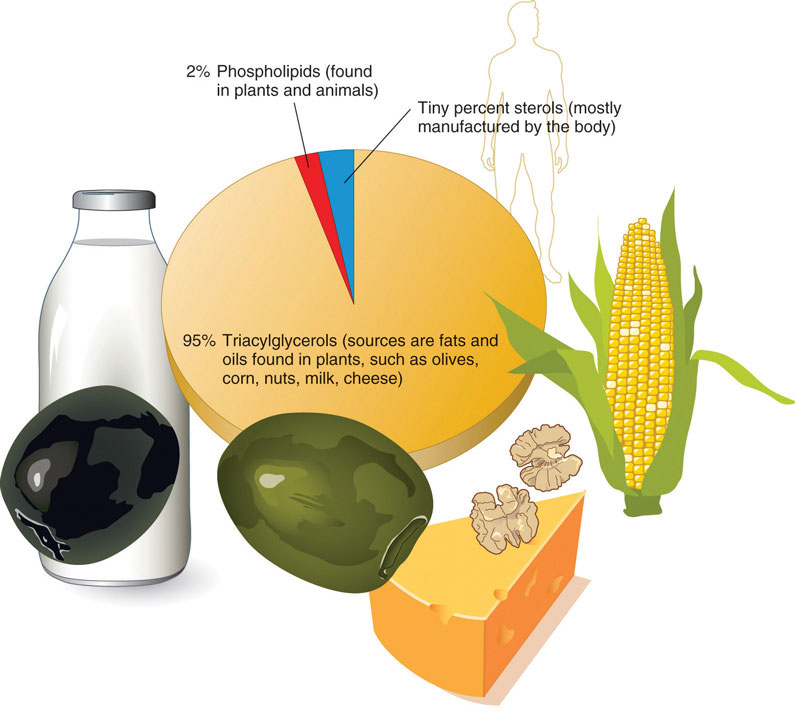


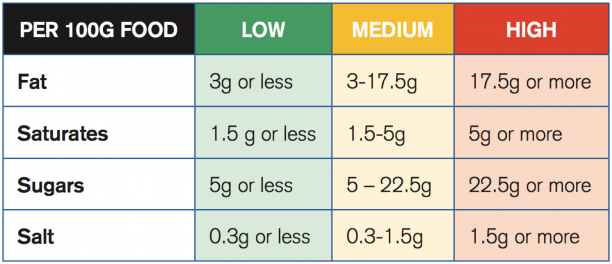




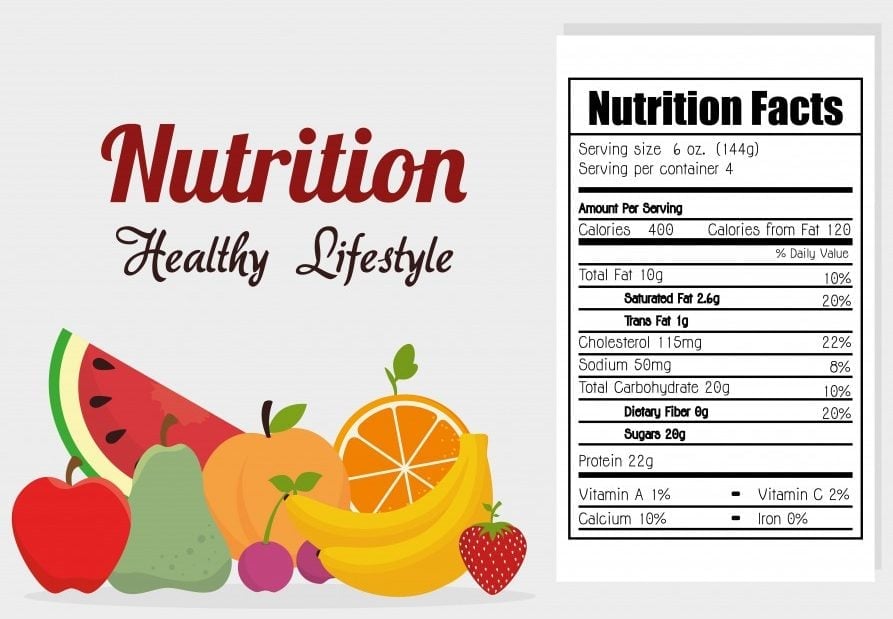

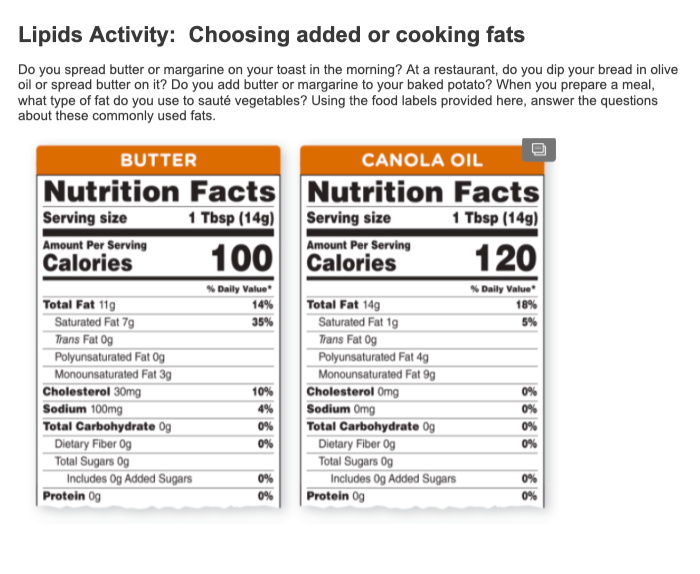


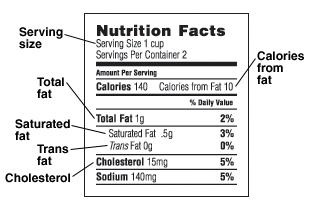

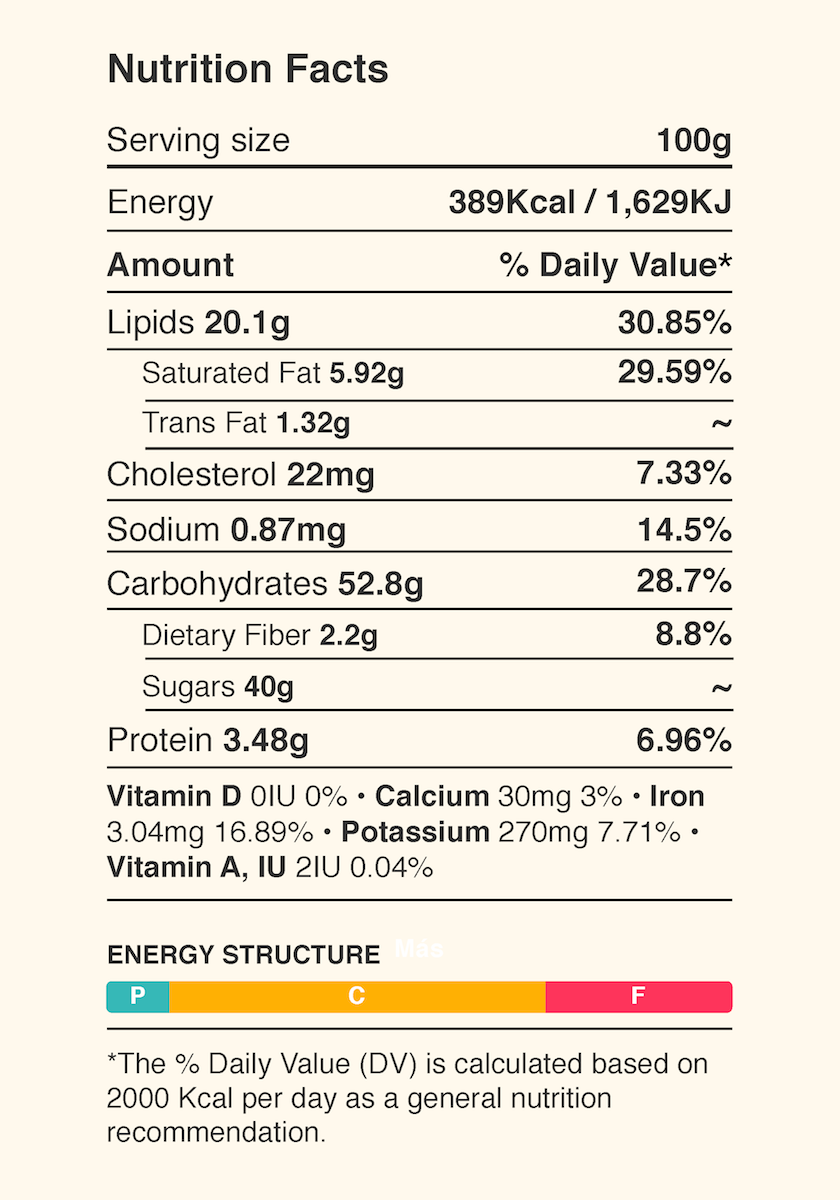



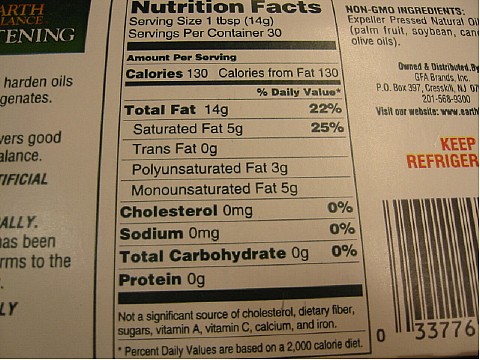
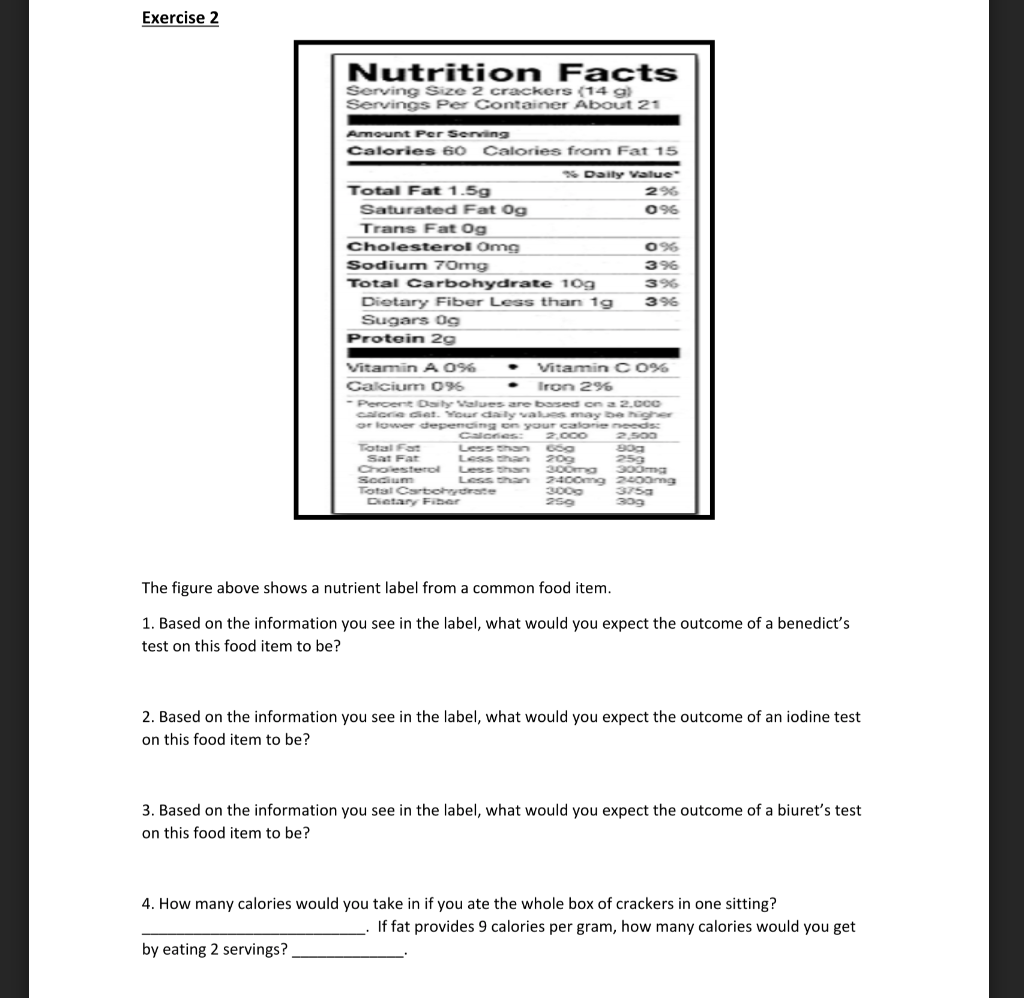


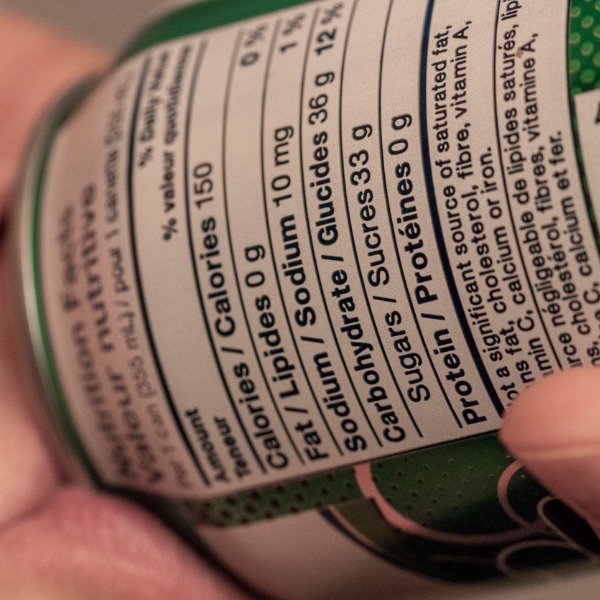
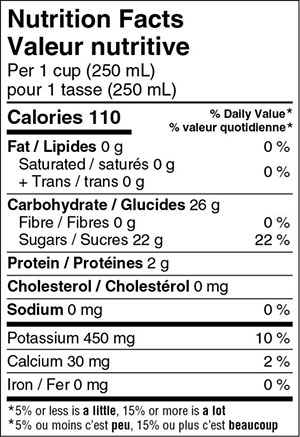






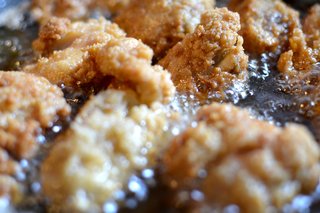






Post a Comment for "43 lipids on food labels"